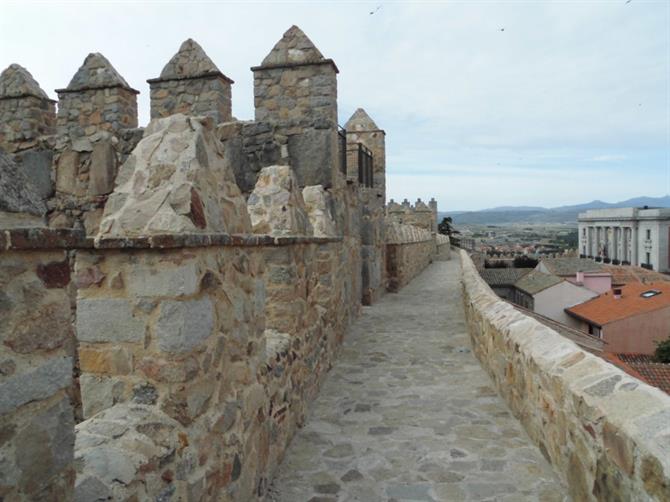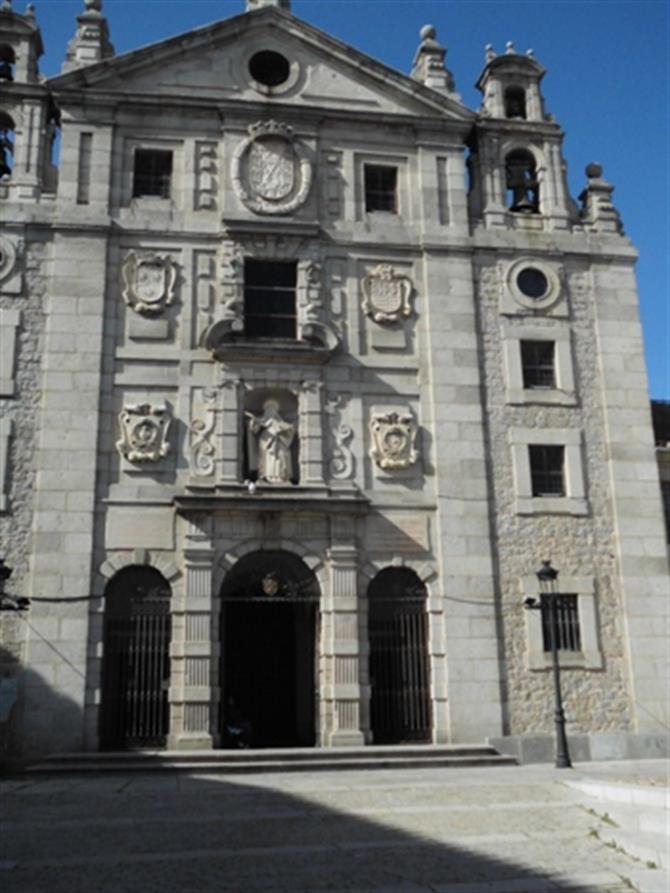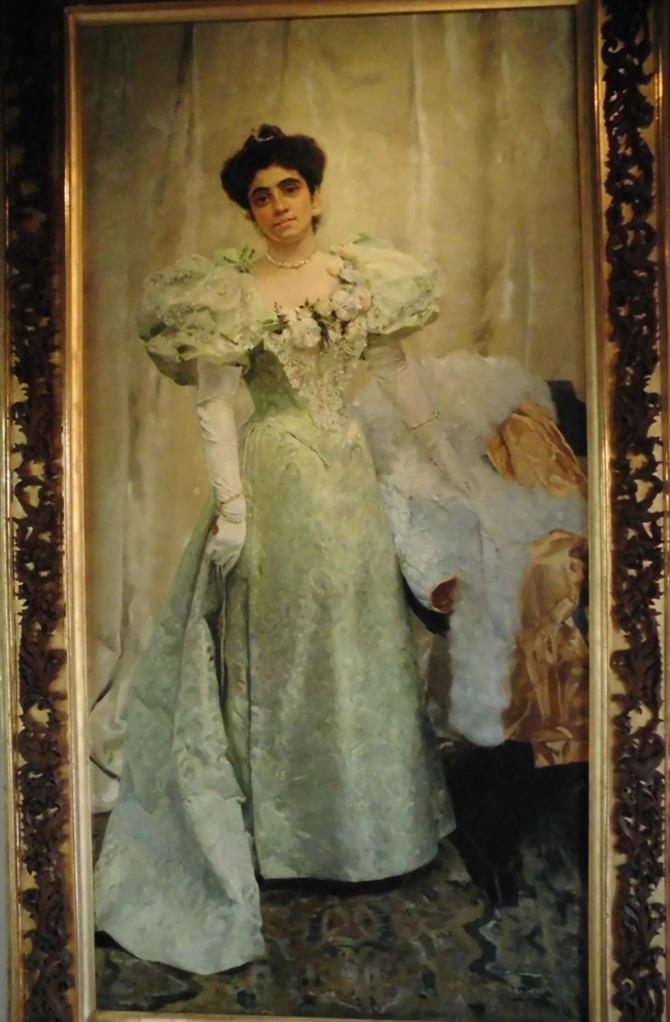Being a predominantly catholic country, Spaniards adore their fair share of saints. Several of them were actually born and/or have lived on the Iberian peninsula, like Teresa of Avila, Ignatius de Loyola or St. Fulgentius of Cartagena, to name but a few.
With its history of countless wars and battles over thousands of years, Spain has no shortage of heroes either. And then, there are everyday heroes who have nothing to do with bloodshed and last, but not least those of fiction. All of them are famous and all come from cities well worth a visit, so why not spend a holiday in Spain with a somewhat different theme? Here is a selection.
Santa Teresa of Avila
Santa Teresa was a16th century Carmelite nun, catholic mystic and reformer of her order. She was born near Avila but entered a Carmelite convent in the city. Increasingly dissatisfied with the lax morals of the order at the time, she founded a new convent, St Joseph´s with far stricter rules. Her writings,based on episodes of ecstasy, are an important contribution the catholic mysticism.
The Medieval Wall
Avila, located at a distance of approx. 110km NW from Madrid in Castilla-Leon on the river Adaja, is famous because of Santa Teresa and the medieval wall, which entirely encircles the old town, running a length of 2500m, 1500m of which can be walked today.

Built between the 11th and the 14th century, the wall is nearly intact, passing the cathedral and incorporating several medieval and Renaissance palaces and affording fabulous views.
Within the wall is also the Convent of St. Teresa and several statues of her.

Opening times: April 1st to October 31st from 10am to 8pm
November 1st to March 31st from 10am to 6pm
Mondays closed except on bank holidays
Admission: €5
Location: Plaza de la Santa
Palacio de los Superunda
One of Avila´s most remarkable palaces is also known as Casa de los Caprotti. Apart from its architecture the place has an interesting history. An Italian 19th century painter by the name of Guido Caprotti got stuck in a snowstorm in Avila whilst on his way to Toledo.

He got so fascinated by the town, that he decided to settle permanently, buy the Palacio de Superunda and convert it into his studio and home. Due to him, the decaying palace was restored to its former glory and Caprotti is best known for his portraits and landscapes of Avila at all seasons. Admire the courtyard and the collection of paintings and miniatures.
Location: Close to Plaza de la Santa
Opening times: Tuesday to Sunday from 10am to 6pm
Mondays closed except bank holidays
Maria Pita and La Coruna
The year was 1589 and La Coruna was under attack from the English fleet under Francis Drake. Despite fierce resistance, the English were advancing and a soldier waving a flag was about to break through the wall surrounding the old town. Maria Pita´s husband, a captain, was killed by a crossbow at her side and she grabbed his sword, raised it over her head and shouted encouragement to her husband´s fellow soldiers. As a result of her courage, the attack was beaten back and ultimately, the English retreated.
It is no surprise that Maria Pita is a national hero and her statue graces the plaza in front of the town hall of La Coruna.

Tower of Hercules
La Coruna´s most famous landmark is the Tower of Hercules, located on a peninsula in the northern part of the city. It´s a World Heritage Site and the oldest continuously functioning lighthouse in the world. The oldest structure dates back about 2000 years to Roman times. Since then the lighthouse has undergone several reconstructions and the current form with the enclosure dates from 1788
Legend has it that Hercules slay the giant Geryon on this site, cut off and buried his head and decreed a city to be built on the spot. Hence the name. Another relates to King Breogan, founder of the Galician Celtic Nation, who perceived the lighthouse as a beacon for his sons to Ireland. His massive statue stands at the foot of the lighthouse.

Access is free, but if you want to climb up and enjoy the view from the top of the 180ff lighthouse you have to pay €2.50.
Opening times: Monday to Sunday 10am to 6pm October to May and 10am to 9pm June to September
The Tower of Hercules is best reached by the white and blue tram, another of La Coruna´s attractions. The line starts at the centre of the port and goes on a very scenic route all the way to the great beach of Orzan with a lighthouse stop in between.

If you want to go by car, you´ll find ample parking space at the site.
Castle of St. Anton
The castle, built in the 16th and 17th century stand on a small island at the entrance of the Bay of La Coruna. Meant as a defence fortress against pirates and conquerors, it´s today the seat of a fabulous archaeological and history museum and another one of La Coruna´s must see.

You may well combine a visit to the castle with a trip to the Tower of Hercules because the tram stop is very close by.
Address: Paseo Alcalde Francisco Vazquez 2D
Opening times: July and August: 10am to 9pm
Sundays and Bank Holidays: 10am to 3pm
September to June: 10am to 7.30pm
Sundays and Bank Holidays: 10am to 2.30pm
Mondays closed
Admission: €2
In La Coruna you can follow the footsteps of not one but three heroes, real and based on legend.
Don Quijote and Consuegra
Who hasn´t heard about Spain´s most famous work of literature: the adventures of Don Quijote by Cervantes. Accompanied by his side kick Sancho Panza and mounted on his skinny horse Rosinante, the delusional knight made three forays in the region of Castilla La Mancha to fight his imaginary battles. The best known adventure is problem his attack on windmills which he thought to be giants.
Don Quijote may be a hero of fiction, but the windmills are very real.
Windmills of Consuegra
Located at a distance of approx. 60km from Toledo in the middle of Castilla La Mancha, Consuegra is a lovely town featuring the seven most well preserved wind mills in Spain.

They all have individual names and stand on a hill overlooking the 12th century castle, just outside the town proper. Passed on from father to son, the windmills were used to grind grain and were in operation until the 1980s.
If you visit Consuegra at the last weekend of October you will have a chance to see a very colourful festival. The best saffron in Spain is grown in this area and the Rose of Saffron Festival celebrates the end of the harvest.
Festival Rose of Saffron
There are competitions to find the fastest plucker of the threads and the most imaginative dishes, all made with the use of saffron. The entire population joins in the festivities often dressed in local costume and the windmills are integrated too.
Pick your own hero or saint of choice and enjoy the cities they came from.
